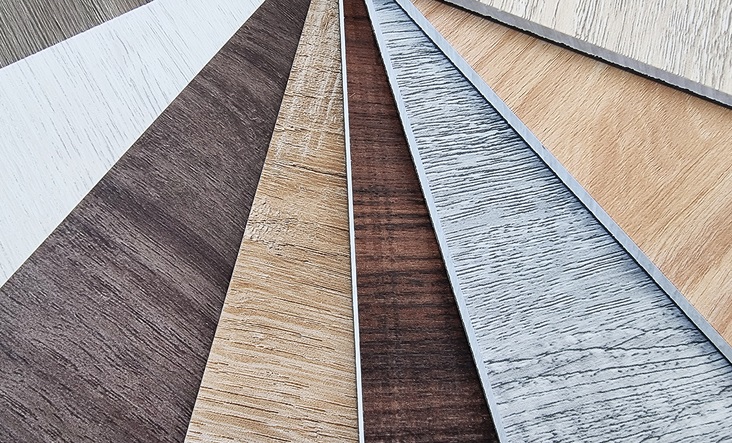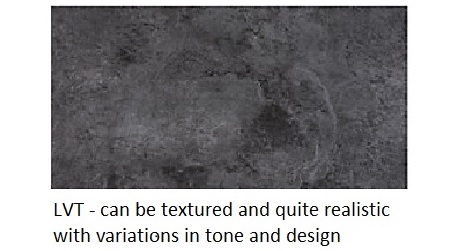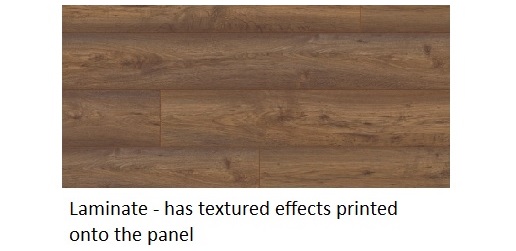IMPORTANT INFORMATION
Vinyl vs Laminate Flooring
Reading time: 4 minutes
With the wide choice of flooring types available, it can be tricky to work out exactly what the best options are. This can be dependent on budget and styling, but when you start to look at the options, it can get a little confusing.
What's cheaper vinyl or laminate flooring?
When it comes to cost, vinyl flooring is generally cheaper than laminate, particularly when considering sheet vinyl. On the other hand, Luxury Vinyl Tile (LVT) and its convincing wood finishes provide a higher level of quality, so can push the price point higher than laminate.
LVT vs laminate cost at a glance:
-
LVT - affordable, in comparison to solid wood flooring, sometimes slightly more expensive than laminate
-
Laminate - affordable compared to solid wood
Which flooring looks better?
Or as some might put bluntly, does vinyl flooring look cheap? This is often a thought because of the functional nature of sheet vinyl, providing an affordable protective layer for floors.
The printing and detail on oak laminate flooring and vinyl has improved greatly over the years, offering a more believable illusion that you’re stepping on wood, at least visually. On thicker planks, greater texture can be added, which means that laminate flooring often has more believability than its vinyl counterpart.
However, advances have meant that in the case of luxury vinyl you can find knots or divots that add another dimension of character. With the development of composite vinyl flooring, there’s even added texture, replicating wood grain or stone. When it comes down to it, both types of flooring can replicate the look of wood, looking attractive to the eye. However, textured LVT might just have the edge.
LVT vs laminate appearance at a glance:
Fitting laminate flooring and LVT
Both LVT and laminate flooring have simple click-lock fittings for easy tongue and groove installation. This makes the flooring easy to place, lift and move in case of mistakes. One of the only major differences is cutting planks into shape. Laminate is very tough to cut through, needing a hand saw, or even a power saw, to get the right length or shape. LVT, however, is a little more manageable, sometimes needing a utility knife, allowing for scoring, bending, then cutting to get the desired results.
The other difference is that vinyl flooring can be peel-and-stick, which makes for quick and easy fixing directly to underlay. Alternatively, the tiles or planks might be floating, as with laminate flooring, with no direct adhesive.
Underlay for laminate flooring and LVT
Used for shock absorption, soundproofing and protection, underlay is needed for carpet and other forms of flooring.
Unless you’ve chosen flooring that already has underlayment attached, you will need to add underlay for both types of flooring. This does of course depend of certain factors, such as:
-
Damp proof underlay – having a layer to protect flooring from moisture is essential, especially if laying on bare flooring such as concrete.
-
Thermal underlay – insulation is integral to keeping an energy-efficient home, so thermal underlay should be fitted, particularly if the floor is above a garage or basement.
-
Soundproof underlay – limiting the sound of neighbours, while dampening sounds from your own home makes good sense. For properties with little furniture or an absence of carpeting, acoustic underlay can reduce echoing to create a homely feel.
LVT vs laminate installation at a glance:
-
LVT - click and lock fitting, available as peel-and-stick or floating, can be cut with a utility knife, requires underlay
-
Laminate - click and lock fitting, requires underlay, can be cut with a saw
What lasts longer, vinyl or laminate?
Both LVT and laminate are hardwearing, practical and will last a good number of years. That said, neither type of flooring is indestructible. Vinyl can be dented by heavy objects and furniture, while laminate can be scratched or chip. Fortunately, there are products available that can repair such damage to laminate (using a repair kit or getting professional help), whereas vinyl is more prone to permanent damage.
LVT vs laminate durability at a glance:
-
LVT - compatible with underfloor heating, water-resistant, can dent
-
Laminate - compatible with underfloor heating, water-resistant laminate flooring for kitchens and bathrooms available, can scratch or chip
We hope you’ve found this comparison useful. We’re here to help you find everything you need to install your chosen laminate or vinyl flooring, including flooring adhesives, tools, beadings and trims.
Disclaimer: The information contained on this page is intended as an overall introduction and is not intended as specific advice from a qualified professional. Travis Perkins aims to avoid, but accepts no liability, in the case that any information stated is out of date.
Always refer to the manufacturer's guidance for installation instructions and product maintenance.







